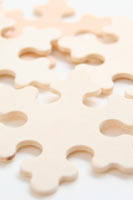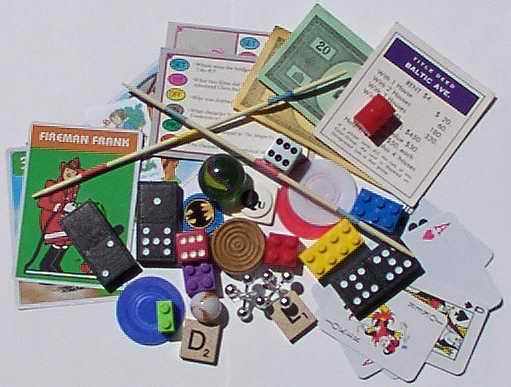I love that autistic characters are starting to show up in popular culture. When my son was first diagnosed with high functioning autism, almost 20 years ago, we had to explain the disability to family and friends. Now just about everyone is familiar with the condition, either through news reports, awareness campaigns (World Autism Awareness Day, that "puzzle piece" ribbon), TV/film (Rain Man), and/or literature (The Curious Incident of the Dog in the Nighttime, Al Capone Does My Shirts).
My intent here is to point out that while the diagnosis "high functioning autism" may be relatively new, these quirky individuals have been appearing as archetypes in our cultural imagination for decades, and continue to so.
Here's my list of fictional characters who aren't specifically identified as autistic, but whose pattern of behaviour and talents beg the armchair diagnosis. My son, for one, loves the idea that he and his hero Sherlock Holmes may have something in common!
- Sherlock Holmes (various short stories by Sir Arthur Conan Doyle). It's all there: the brilliance, the hyper-rationality, the obsessive interests (54 separate types of tobacco ash - really?), the eccentric eating/sleeping patterns, the awkward social skills, etc. Arthur Conan Doyle has been quoted as stating that he based the character of Sherlock Holmes on Dr. John Bell, one of his university professors. Whose betting Dr. Bell was probably somewhere on the spectrum himself? Some would even argue that Doyle has given us not just one autistic character but a set of them: Sherlock's misanthropic brother Mycroft demonstrates many of the same characteristics as his brother, to which he adds an abhorrance for social conversation, which is very aspie-ish.
- Dr. House (Hugh Laurie), House (television show). Almost unfair to include this as a separate entry, since the character of House is clearly modelled after Sherlock Holmes. He even has his own Watson, not-so-cleverly renamed "Wilson." The House character is much more anti-social than Holmes, but everything else - the brilliance, the hyper-rationality, the obsessive interests, the eccentric eating/sleeping patterns - tallies.
- Dr. Temperence Brennan, Bones (television show). Yes, she's been given a troubled childhood and other psychologically damaging events to explain her eccentricities. But none of that explains her hyper-rationality, her inability to detect the subcontext of language, her social isolation, or her obsessive interest in such an odd field. Just to seal the deal, the writers have given her a Watson too, this time in the form of a female, her best friend Angela Montenegro.
- Dr. Spencer Reid, Criminal Minds (television show). There's little ambiguity here - this "super genious" with poor social skills fulfills most aspie stereotypes. He doesn't have one Watson so much as a team of them, all politely correcting him when he interprets something too literally or accidentally says something insensitive. If only the real world were as tolerant.
- Dr. Sheldon Cooper, Big Bang Theory (television show). Like Dr. House, another character clearly written to conform to the "obnoxious aspie" stereotype - hyper-intelligent, self-obsessed, thoughtless and socially obtuse. What I like about the Sheldon character, though, is that he's played for laughs. As the mother of an aspie son, I can assure you autism often is quite funny - as when I overheard my son respond to a female classmate who called him on the phone: "What do you mean, you don't have any question to ask? Then why are you calling me?" Tell me that that couldn't have been lifted straight out of the script of an episode of this show!
- Willy Wonka, Charlie and the Chocolate Factory (fiction). A character that captures the darker side of autism, Wonka's obsession with chocolate, his eccentric behaviour, and his self-imposed isolation come off as vaguely creepy. Add to that his poor social skills, his love of systems/patterns, and his moral inflexibility (aspies do have a tendency to the world in black and white), and he's definitely a candidate.
- Captain Nemo (fiction). Another obsessive personality not known for his moral inflexibility, possessing a misanthropy so pronounced that he actually builds his own submarine in order to escape from civilization.
- Ignatius Reilly, Confederacy of Dunces (fiction). Proving that not all aspie characters are super-geniuses is Ignatius Reilly, a failed hot dog vendor who lives with his mother. Pompous, misanthropic, hyperlexic, a slave to sensory sensativities, utterly devoid of social skills, and obsessed by a sixth century martyr named Boethius, his interactions with the "real world" are - in the vein of Don Quixote - comically/tragically inept.
- Lisbeth Salander, The Girl with the Dragon Tattoo (fiction). Like Dr. Temperence Brennan in Bones, the author provides Salander with a horrific childhood which certainly suffices to explain many of her ... shall we say, eccentricities. But her photographic memory, her deep social introversion, her moral inflexibility, and her brilliant hacking skills suggest that she falls somewhere on the autism spectrum.
- Nero Wolfe (various novels by Rex Stout). This massively fat detective is brilliant, self-absorbed, eccentric, obsessive (his collection of orchids is said to number over 10,000), wedded to routine, doesn't like to be touched, and never leaves his home if he can help it. His Watson, by the way, is an investigator by the name of Archie Goodwin.
- Batman (comic books). Though the character has undergone many iterations and re-imaginings over the years, aspects of his character that haven't changed are his brilliance, his awkward social skills, his social isolation, and his inflexible moral code, all of which are autistic-like. He has a Watson too ... have you figured out who it is? Nope - not Robin; it's Alfred Pennyman, his butler.
- Dr. Egon Spengler, Ghostbusters (movie). With degrees in parapsychology, physics, and nuclear engineering, his geekiness is unchallenged. But what earns him a spot on this list is his pendantic speaking style, his extreme literalness, and his complete obtuseness with respect to social interactions.
- Mr. Spock, Star Trek (television show). Okay, okay - I get that he's a Vulcan, a race that has denounced emotion. Whicu may explain his social awkwardness, his lack of semantic/pragmatic language, and his adherence to logic, but doesn't explain his engineering brilliance, his photographic memory, or why he talks like a computer.








